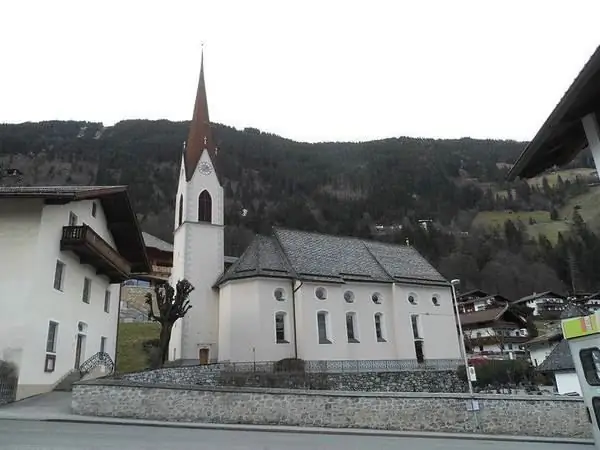
Description of the attraction
At the end of the 15th century, in the village of Finkenberg, there was a wooden chapel dedicated to St. Leonard. In 1634, it was replaced by a stone structure, which was slightly larger in area. The current building of St. Leonard's Church is the third building to appear on a prayer site in the center of Finkenberg. It is surrounded by a cemetery. Saint Leonard is considered a protector of prisoners, sick animals and helps to cope with problems in agriculture.
The Church of St. Leonard was built in the years 1719-1721 in the early Baroque style, as evidenced by the design of its facades. The architect of the sacred building is Hans Holzmeister from Hippach. He decided to make the most of the old church building, so an attentive viewer who finds himself in the church of St. Leonard will surely notice the old masonry and some architectural details typical of the sacred buildings of past centuries. Immediately after the construction of this church, pilgrims flocked here. In 1833, the nave of the temple was expanded, and 30 years later, the north tower crowned with a spire was added to the church. Since then, no significant changes have been made to the appearance of the church. In 1891, the church of St. Leonard became a parish church.
In 2015, the roof of the temple was completely replaced and the facades were updated. They were given the same shade that was originally during the construction of the temple. The restorers were able to determine this color by removing numerous layers of plaster. In the same year, the organ installed in the church was repaired.
The frescoes that adorn the interior of the church were created by the Innsbruck-based artist Wolfram Keberl.







